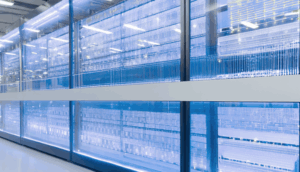In today’s interconnected industrial landscape, reliable data communication is paramount. Industrial data communication cables serve as the backbone of these networks, facilitating the transmission of critical information between devices, control systems, and enterprise-level infrastructure. The integrity and performance of these cables directly impact operational efficiency, process control, and overall productivity. This article explores how the selection and implementation of appropriate industrial data communication cables can optimize network performance.
One of the key considerations when selecting industrial data communication cables is the environment in which they will operate. Industrial environments are often characterized by harsh conditions, including extreme temperatures, exposure to chemicals, vibration, and electromagnetic interference (EMI). Standard commercial-grade cables are typically not designed to withstand these conditions, leading to premature failure and network disruptions. Industrial-grade cables, on the other hand, are specifically engineered with robust materials and construction to provide superior resistance to these environmental factors. This includes features such as shielded constructions to mitigate EMI, durable jacketing materials to withstand abrasion and chemical exposure, and specialized insulation to maintain signal integrity across a wide temperature range.
Beyond environmental considerations, the specific application requirements also play a crucial role in cable selection. Different industrial protocols, such as Ethernet/IP, PROFINET, and Modbus, have varying bandwidth and communication requirements. Selecting a cable that meets or exceeds these requirements is essential for ensuring reliable data transmission. For example, high-speed Ethernet applications may require Category 5e or Category 6 cables with enhanced shielding and twisted-pair construction to minimize signal degradation and crosstalk. In contrast, lower-speed serial communication applications may be adequately served by shielded or unshielded twisted-pair cables with lower bandwidth specifications.
Proper installation and maintenance practices are also critical for optimizing network performance. Incorrect cable routing, excessive bending, and improper termination can all lead to signal degradation and network failures. It is essential to follow manufacturer’s recommendations for cable installation and to use appropriate tools and techniques to ensure proper termination. Regular inspection and maintenance of cables can also help identify potential problems before they escalate into major network disruptions. This includes checking for physical damage, loose connections, and corrosion.

In conclusion, optimizing network performance in industrial environments requires careful attention to the selection, installation, and maintenance of industrial data communication cables. By choosing cables that are specifically designed to withstand harsh environmental conditions, meet the requirements of the specific application, and are properly installed and maintained, organizations can ensure reliable data communication, improve operational efficiency, and maximize the return on their investment in industrial automation technologies. Ongoing advancements in cable technology, such as improved shielding techniques and the development of more robust materials, continue to enhance the performance and reliability of industrial data communication networks.